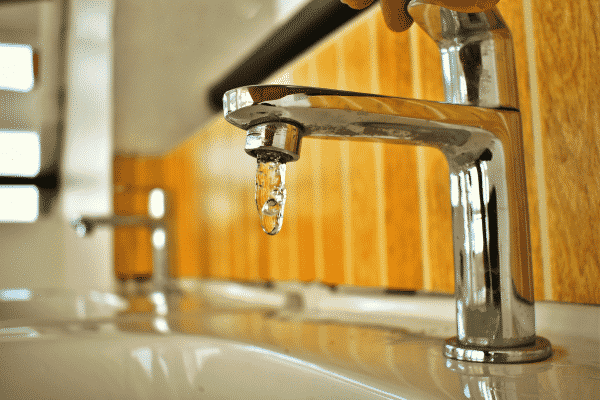By Keith Boggs
Posted January 15, 2021, at 7:00 am CT
Our job as home inspectors is to find and describe a property’s defects, so you, as a potential home buyer, understand as much as you can about its condition before you commit to what will likely be one of the most significant investments in your lifetime. All defects, however, are not created equal. Some are relatively straightforward and inexpensive to address. Others are not only complex and costly, they can also put a house and the people who live in it at great risk.
To help you prepare for your upcoming home inspection, we want to tell you about the most common issues we come across during our Dallas home inspections. Thinking about these defects and discussing them with your family early in your home buying journey will simplify your post-inspection decisions and enable you to negotiate a fair agreement. Here they are and what you should know.
1. Foundation Problems
We like to say that there are two types of homeowners in North Texas: those with foundation issues and those who will be dealing with foundation issues one day. This is because most homes in this area sit on clay-rich soil, which expands significantly when wet. When exposed to water — whether caused by storms, poor drainage, or water leaks — it swells and pushes on the foundation, which can cause it to crack. Foundations can also settle and sink as the soil underneath them erodes or compacts. These problems almost always lead to annoying cosmetic issues, like cracks in walls and ceilings and peeling drywall tape. They can also cause serious damage to a home’s structural systems.
You Should Know: While the average cost of foundation work in our area is around $5,000, serious problems can cost upwards of $30,000 to remedy. A ZIPLEVEL measurement tool can help your home inspector accurately determine how level a foundation is.
2. Wood Destroying Insects
This is one of the most daunting problems you can be made aware of after a home inspection. Termites, carpenter ants, and other wood destroying insects can wreak havoc on a home’s structure, often going undetected for years as they silently chew through the elements that keep a house from falling apart. The cost of dealing with them gets higher over time and includes both the treatment of active infestations and repair of the damage that has been done.
You Should Know: In the State of Texas, home inspectors aren’t required to determine the presence or absence of wood destroying insects. Ask your home inspector if and how he goes above and beyond that baseline guidance.
3. Grading and Drainage Issues
Improper grading (the slope of soil around a house) and faulty gutters or downspouts can cause water to pool and stand around a home. Not only can this cause water damage (which can be easily covered up), it can lead to the costly foundation and wood destroying insect issues mentioned above. Yet, we find these defects all the time — homes where the landscape doesn’t slope downwards from the home or where gutters and downspouts are improperly sized, located, or installed.
You Should Know: While fixing faulty grading, gutters, and downspouts won’t break the bank, replacing seamless metal gutters in our area can cost several thousand dollars, depending on the size of the home.
4. Faulty Plumbing and Electrical Systems
Plumbing and electrical systems are complex and largely hidden behind walls and ceilings, which makes this area of a home inspector’s job difficult. Some problems, for example, leaky faucets, non-functioning outlets, or broken light fixtures, are easy to identify. They’re also relatively inexpensive to fix and don’t pose a lot of risk to the home or the people who live in it. Other problems, however, like clogged sewer lines, broken pipes, or faulty electrical wiring, are much harder to find. They can be expensive to address and, if left unaddressed, can put the home at risk of water or fire damage, which also poses a serious risk to the people who live there.
You Should Know: Thermal imaging cameras can help your home inspector detect electrical problems, like hot breakers, hot wires, and hot appliance connections, as well as excess moisture in a home that can lead to damage and mold.
5. HVAC Issues
Heating, ventilation, and air conditioning (HVAC) systems are essential for keeping a home comfortable. (If you’ve ever had an air conditioner quit working in summer in Texas, you understand!) They are also among the most expensive systems to repair or replace, which means when sellers are preparing to put their home on the market, they’re likely to be hesitant to replace aging equipment and, if they do, they probably aren’t going to go with a top-of-the-line solution. In addition to finding systems that are past their prime, we often find that they have been improperly sized or installed, which leads to inefficiencies and higher costs to run.
You Should Know: You can expect to pay as much as $10,000 or more to replace an existing HVAC system.
6. Broken Appliances
Appliances, including dishwashers, refrigerators, cooktops, ovens, and water heaters, are the workhorses of daily life. When they don’t work properly or fail altogether, it’s more than just a minor inconvenience. Yet very few inspections end without our inspectors identifying appliance issues. Fortunately, appliance issues are relatively inexpensive to remedy unless you’re talking about high-end kitchen appliances which can be costly to repair or replace.
You Should Know: Home inspectors in Texas are only required to operate appliances “in one mode with ordinary controls at typical settings,” which means they don’t have to test every (or even many) appliance functions. Again, ask how your inspector goes above and beyond.
7. Chimney, Roofing, and Attic Issues
Inspecting the upper levels of a home can be difficult — roofs can be hazardous to walk on, attics can be tough to access. But it’s rare to find zero defects in these structural elements, and those defects can lead to costly results. Aging roofs, missing or incorrectly installed flashing, and crumbling bricks and mortar can all lead to water damage. Inadequate insulation can make heating and air conditioning bills skyrocket. And structural problems, like broken beams or a leaning chimney, can have disastrous effects if not addressed.
You Should Know: Addressing defects to a chimney, roof, and/or attic can be costly and unimpressive, but they are among the more important issues to tackle. Not dealing with them early can lead to larger, more expensive repairs down the road.
We hope you find this advice helpful. Please reach out to us for more information about how we provide top-notch home inspection services at reasonable prices with the best customer service in the North Texas area.
About Our Licensed Dallas Home Inspections
Keith Boggs is the owner of Stonebriar Property Inspections. He is your personal home inspector, and his investment in the company will be reflected in the quality of your inspection. Mr. Boggs’ inspection reports are professional, comprehensive, detailed, and clear. They average about 60 pages, include 100 to 200 color images, and include detailed findings, recommendations, tips, and best practices for maintaining your home. Buyers also receive a full video debrief explaining all findings. Stonebriar Property Inspection’s customer reviews speak to Keith’s reputation as an ethical, reliable, and courteous Dallas home inspector. Stonebriar Property Inspections is a proud member of the Better Business Bureau with an A+ rating. SPI is fully licensed by the Texas Real Estate Commission for home inspections and the Texas Department of Agriculture for termite/wood destroying insect inspections.





